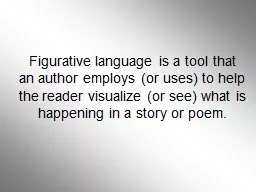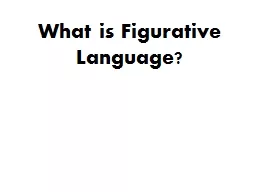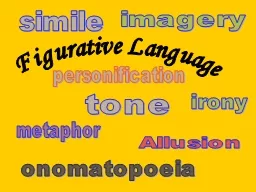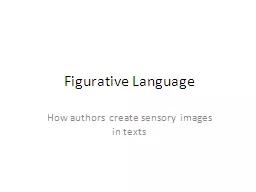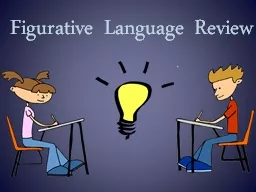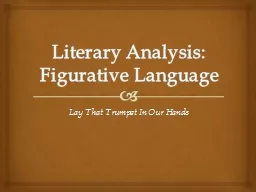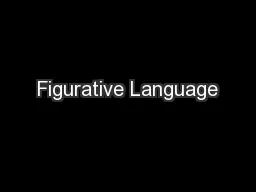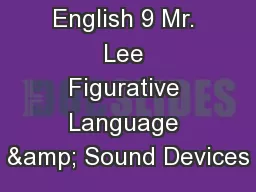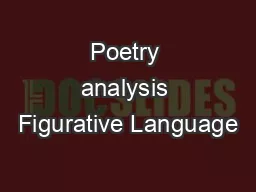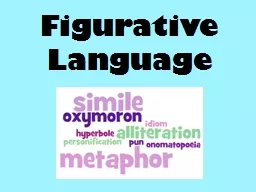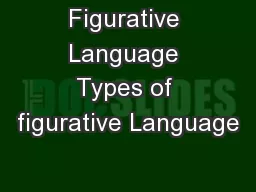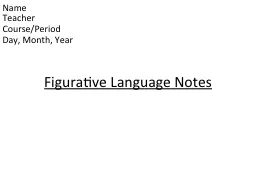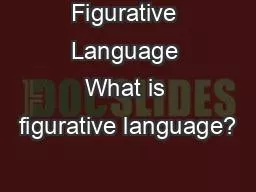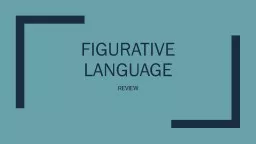PPT-Figurative language is a tool that an author employs (or us
Author : jane-oiler | Published Date : 2016-03-02
Simile A simile compares two very different things that have at least one quality in common using like or as While similes are used in poetry principally for artistic
Presentation Embed Code
Download Presentation
Download Presentation The PPT/PDF document "Figurative language is a tool that an au..." is the property of its rightful owner. Permission is granted to download and print the materials on this website for personal, non-commercial use only, and to display it on your personal computer provided you do not modify the materials and that you retain all copyright notices contained in the materials. By downloading content from our website, you accept the terms of this agreement.
Figurative language is a tool that an author employs (or us: Transcript
Download Rules Of Document
"Figurative language is a tool that an author employs (or us"The content belongs to its owner. You may download and print it for personal use, without modification, and keep all copyright notices. By downloading, you agree to these terms.
Related Documents

